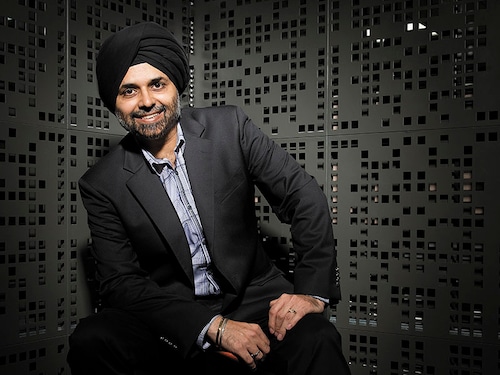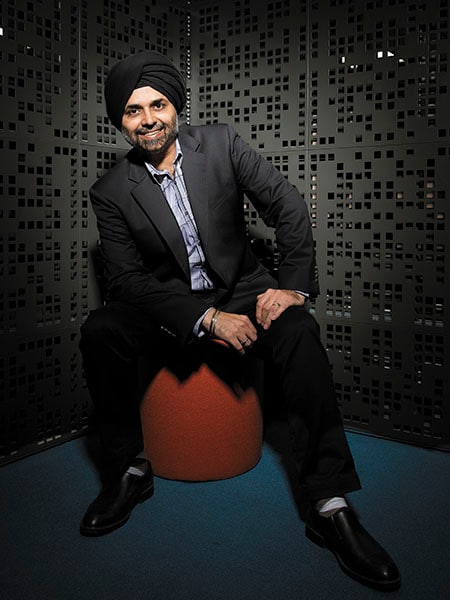It's safe to say that cloud has become the norm: Bikram Singh Bedi
The head of India, Amazon Internet Services, on emerging technology trends and why Indian businesses have no choice but to go digital


 Bikram Singh Bedi says the number of AWS customers jumped from 75,000 to 120,000 within nine months of opening its Mumbai data centresImage: Amit VermaQ. What are the big trends in cloud computing for businesses and how are those playing out in India?
Bikram Singh Bedi says the number of AWS customers jumped from 75,000 to 120,000 within nine months of opening its Mumbai data centresImage: Amit VermaQ. What are the big trends in cloud computing for businesses and how are those playing out in India?
We are going through a shift in technology that is unlike any other. The pace is faster than anybody had anticipated. Over a period of time, very few companies will have their own data centres. It seems safe to say that cloud has become the norm.
One important consequence is that access to sophisticated IT is more of a level playing field today. Buying servers, storage and other hardware no longer differentiates you from the competition. The real differentiator is how you’re using the data that you get. That’s the first thing that we’re starting to see—that translates into analytics, be it reporting, live or predictive. Amazon Web Services [or AWS, whose Indian arm is Amazon Internet Services] has a whole range of offerings that are seeing strong traction with different customers.
For example, Lupin Pharma put together a business intelligence platform within four weeks of using AWS. Delhivery, a large logistics services business, is using a number of analytics services, such as Amazon Redshift [a data warehousing service] to build a complete reporting backend for itself, which helps it meet SLAs (service level agreements) with their customers.
That’s the first trend that we are seeing, where data and what you do with data and primarily analytics is getting to be important.
The other thing is this whole mobile space. Developers aren’t really adapting for mobile, but building for mobile.
AWS has a number of services for the mobile environment that are drawing many users. For instance, in media, all the important platforms that are in play today—21st Century Fox’s Hotstar, Voot from Viacom18 [part of Nework18, the publisher of Forbes India]—and other OTT (over-the-top) or digital media networks being built in the media space have a significant amount of AWS services.
Mobile is clearly leading the way. For instance, we have a service called Device Farm, which allows [developers] to test mobile devices across over 200 makes and models. A number of those are Indian devices.
Q. Where are all these technologies headed?
There is this idea of the Fourth Industrial Revolution. There are 432 million Indian internet users, with another 600 million coming, and the way they use the internet will be different. There is going to be a lot of voice and images and, hence, we see this whole play around Artificial Intelligence (AI), natural language processing, deep learning, machine learning and the Internet of Things (IoT).
All these technologies are moving together and provide benefits to industries, people and governments that were never there before.
There will be a big play in speech, and we have referencible customers such as Haptic. They give you notifications and callbacks. The speech used there is an AWS technology called Polly. Exotel, a telco, as a part of its IVR (interactive voice response) system, is again using Polly. One of the largest matrimonial sites in the world, based in India, uses Amazon Rekognition, a service that allows you to identify images.
In IoT and connected homes, there will be many advances. We are starting to see examples in India as well—a company that makes pumps uses AWS’s IoT technologies to monitor the use of its products and uses the data to improve them.
undefinedSEW Infrastructure found that AWS is cheaper than the air-conditioning bill of its own data centre.[/bq]
Q. What has happened since you opened your Mumbai data centres?
In the first nine months, the number of our customers here jumped from 75,000 to 120,000. Over 90 percent of India’s top startups use AWS. If you consider AWS skillsets in the market, between January and June 2016, some 16,000 people came to our training events.
Since the launch [in June 2016], the number of certifications on AWS technologies in the first nine months has gone up by 129 percent year-on-year. The number of people who have come to our courses has gone up by over 200 percent.
Existing customers are looking to put more workload on to the cloud. There is also a huge pull from new customers. We have launched a service called Direct Connect, which hooks a large business’s data centre up to Amazon’s cloud in Mumbai now. Earlier that would have been in Singapore or Ireland.
That’s starting to drive a lot of enterprise workloads across the board, with different kinds of verticals, businesses and so on. In the SMB (Small and Medium Business) segment, Supermax, a large manufacturer of blades, has implemented its SAP applications on AWS. Brigade Group has put its S/4HANA [a business management software] on AWS.
The heart of India is SMB we have over 51 million SMBs in the country. And this whole segment is adopting AWS for core workloads. Kent RO, which is in the water purifying business, has implemented its Microsoft applications such as Dynamic CRM on AWS. SEW Infrastructure found that the cost of using AWS was cheaper than the air-conditioning bill of its own data centre.
With large enterprises, consider Bajaj Finance, Aditya Birla Finance or Axis Bank, many customers are moving to build their new age digital businesses on AWS.
Q. What are these customers’ biggest problems and how are they using you differently today?
If you look at India’s size and scope, we don’t have an option but to go digital. And when something like demonetisation happens, for a country like ours, digital is mandatory.
In education, there are a large number of people, but we don’t have the facilities. Similarly with health care. With Digital India, demonetisation and other initiatives, businesses have got the message that digital is the way to go and they are building new businesses that way.
From Airbnb in the US to Ola in India, AWS is the underlying technology for the business. Look at Bajaj Finance: They realised about 18 months ago that they needed a digital strategy and they’ve built a whole new digital lending business. As a result, they have brought down the loan processing time from days to seconds. At PayU, they have built an analytics and reporting engine on AWS, which is giving them real-time insights into how to move forward with various customers.
In education, Manipal Group is one of the largest businesses in the country. They have gone on to the online education space. They have something like a lakh uploads a day in terms of assessments, and at peak time, for example when results are announced, they have four times as many uploads. Today, 70 percent of their IT infrastructure footprint is on AWS. The other big part of what we’re starting to see is this whole piece around traditional IT infrastructure. Clearly, customers are starting to understand that large software packages—you don’t need to invest in them anymore. It may make more sense to run them on the cloud.
First Published: Oct 04, 2017, 06:55
Subscribe Now